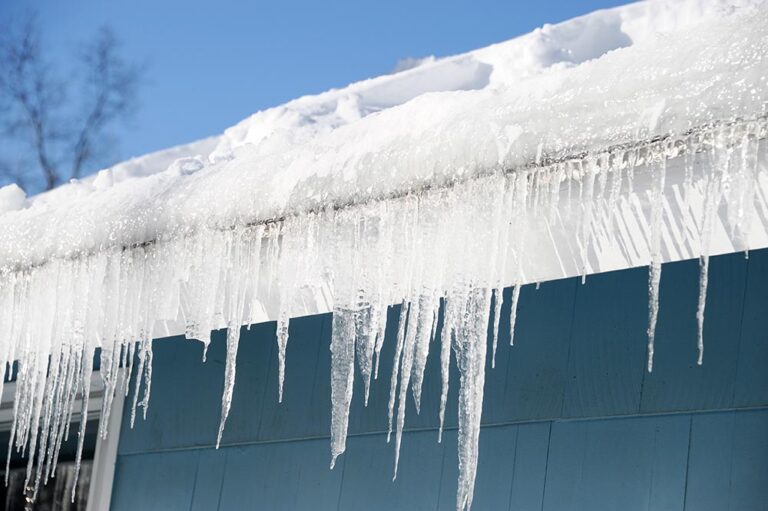The Ultimate Drip Edge Installation Guide:
When it comes to roofing, every detail matters. One such detail that often gets overlooked but plays a critical role in protecting your home is the drip edge. Proper drip edge installation is essential for maintaining the structural integrity of your roof and preventing water damage. In this ultimate guide, we’ll cover everything you need to know about drip edge installation, including tips, techniques, and why it’s a must-have for your roofing system.
What Is a Drip Edge?
A drip edge is a metal flashing installed along the edges of your roof. It serves multiple purposes, such as guiding water away from the fascia and into the gutters, preventing water infiltration, and protecting the underlying roofing components. Drip edges are typically made from aluminum, galvanized steel, or copper and are shaped to direct water flow efficiently.
Why Is a Drip Edge Important?
The drip edge is a crucial component of a well-installed roofing system. Here’s why:
- Prevents Water Damage: By directing water into the gutters, a drip edge minimizes the risk of water seeping into the fascia, soffit, or roof deck.
- Protects Against Wind-Driven Rain: It acts as a barrier against rainwater blown under the shingles by strong winds.
- Enhances Roof Durability: A properly installed drip edge helps maintain the overall integrity of your roof by preventing edge curling or rot.
- Improves Aesthetic Appeal: It gives the roof edges a clean and finished look, enhancing curb appeal.
- Meets Building Codes: Many local building codes now require drip edge installation for new roofs.
Tools and Materials Needed for Drip Edge Installation
Before starting the installation process, ensure you have the following tools and materials:
- Drip edge flashing (aluminum, steel, or copper)
- Roofing nails or screws
- Hammer or nail gun
- Tin snips or metal shears
- Measuring tape
- Chalk line
- Roofing adhesive (optional for added security)
- Ladder
- Safety gear (gloves, goggles, and harness)
Step-by-Step Drip Edge Installation Guide
Step 1: Measure and Cut the Drip Edge
- Use a measuring tape to determine the length of each roof edge.
- Cut the drip edge to the required length using tin snips or metal shears.
- Make angled cuts at corners to ensure a seamless fit where pieces meet.
Step 2: Prepare the Roof Edge
- Ensure the roof decking and underlayment are installed properly and securely.
- Remove any debris or loose materials along the edges.
- If the roof has existing drip edges, carefully remove them to avoid damaging the shingles.
Step 3: Position the Drip Edge
- Start at a lower corner of the roof and work your way up.
- Position the drip edge so that it hangs about 1/4 inch beyond the roof decking.
- The vertical flange should sit snugly against the fascia board.
Step 4: Nail the Drip Edge in Place
- Secure the drip edge with roofing nails, placing them about 12 to 16 inches apart.
- Ensure the nails are driven straight to prevent buckling or warping.
- Overlap each piece of drip edge by about 1 to 2 inches to provide a continuous line of protection.
Step 5: Seal Joints and Overlaps
- For added water resistance, apply roofing adhesive or sealant at the joints and overlaps.
- Smooth out the sealant to create a clean finish and ensure full coverage.
Step 6: Inspect the Installation
- Check for gaps, misalignments, or loose nails.
- Ensure the drip edge is properly aligned with the gutters to direct water efficiently.
- Make any necessary adjustments to ensure a seamless fit.
Drip Edge Installation Tips
- Work in Sections: Install the drip edge in manageable sections to maintain control and accuracy.
- Avoid Overdriving Nails: Overdriven nails can distort the drip edge, leading to gaps and reduced effectiveness.
- Use High-Quality Materials: Opt for durable materials like aluminum or galvanized steel to ensure long-term performance.
- Align with Gutters: Make sure the drip edge aligns perfectly with the gutters to channel water effectively.
- Prioritize Safety: Always use proper safety gear and secure your ladder when working at heights.
Common Mistakes to Avoid
- Improper Overlaps: Failing to overlap drip edge pieces correctly can lead to water infiltration.
- Skipping Nails: Skipping nails to save time can result in a loose drip edge prone to damage.
- Poor Alignment: Misaligned drip edges can direct water away from the gutters and cause pooling.
- Neglecting Sealant: Skipping sealant at joints and overlaps reduces water resistance.
- Ignoring Local Codes: Always check local building codes to ensure compliance during installation.
When to Replace a Drip Edge
While drip edges are designed to last for years, they may need replacement if you notice the following:
- Visible rust or corrosion
- Detached or loose sections
- Water stains or damage on fascia or soffit
- Warped or bent edges
- Evidence of pests or critters entering the roof
If you’re unsure whether your drip edge needs replacement, contact a professional roofer for an inspection.
DIY vs. Professional Installation
While drip edge installation can be a DIY project for those with roofing experience, it’s often best to leave it to professionals. Here’s why:
- Precision: Professional roofers ensure precise measurements and alignment.
- Safety: Trained professionals have the equipment and expertise to work safely at heights.
- Warranty Compliance: Many roofing warranties require professional installation to remain valid.
Conclusion
A drip edge is a small but vital component of a roofing system. Proper installation protects your home from water damage, enhances the roof’s durability, and ensures compliance with building codes. Whether you’re tackling the project yourself or hiring a professional, following this ultimate guide will help you achieve a successful installation.
If you’re in Southern Indiana or Louisville and need expert roofing services, Andes Roofing is here to help. Our team of skilled professionals specializes in comprehensive roof inspections, installations, and repairs. Contact us today for the best roofing solutions tailored to your needs!






